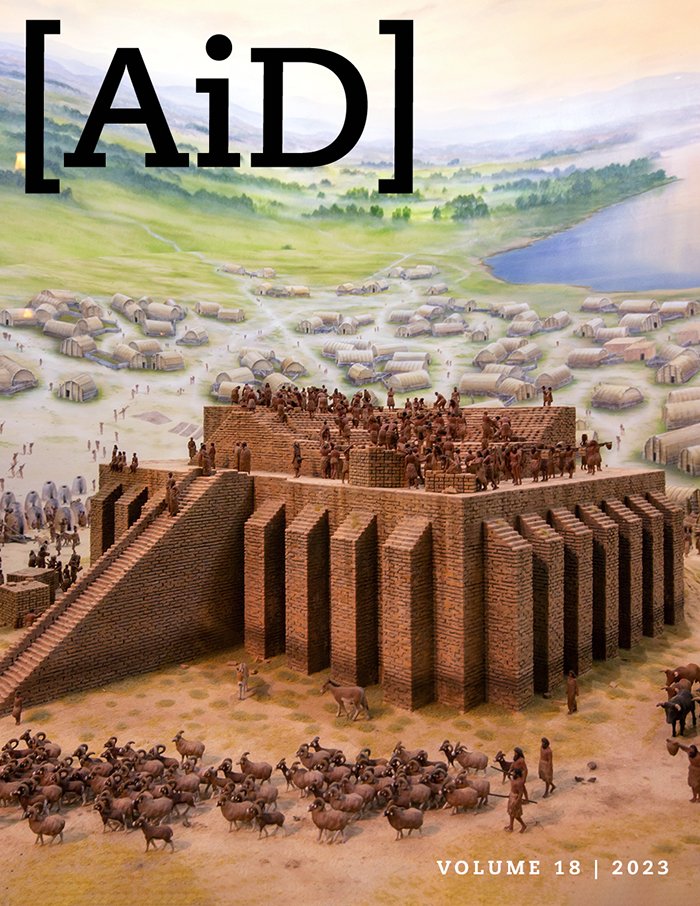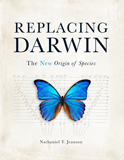
FECA, LECA, LUCA, and Flights of Fancy
The Evolutionary Explanation of Complex Life-Forms Doesn’t Add Up.
Abstract
As part of the evolutionary model, evolutionists must explain the origins of complex life-forms, including eukaryotic life. According to the model, there was a single common ancestor of all life that eventually developed into the prokaryotes and eukaryotes we have today. The first eukaryote then developed into the wide variety of eukaryotes we see today. Since there are approximately 8.7 million estimated species of eukaryotes on earth,1 the evolutionists have a lot of explaining to do.
According to the evolutionary model, prokaryotes evolved first and, over time, gave rise to a last universal common ancestor (LUCA). After LUCA, distinct lineages emerged, first leading to archaea then to the first common ancestor of eukaryotes (FECA). FECA then diverged from the last eukaryotic common ancestor (LECA) to form the multitude of eukaryotes we see today. It is important to note that LUCA, LECA, and FECA are all phylogenetic constructs. They are inferred post hoc from phylogenetic trees, not based on empirical observations.2 There are no fossils of any of these constructs, nor do we have any living organisms that resemble the hypothetical constructs.
There are no fossils of any of these constructs, nor do we have any living organisms that resemble the hypothetical constructs.
To make this broad framework stick, evolutionists must explain the differences between prokaryotes and eukaryotes. For example, prokaryotes completely lack membrane-bound organelles, yet eukaryotes are dependent on them for survival. Prokaryotes lack a cell nucleus, while eukaryotes have one. Prokaryote DNA is largely free-floating within the nucleoid, while eukaryote DNA is stored carefully in the nucleus. All prokaryotes are single celled, while some eukaryotes are able to be multicellular. While these may seem like insignificant changes, at a molecular level, they are massive.
Endosymbiont Theory to the Rescue?
The biggest and most obvious problem for the transition from LUCA to FECA is the emergence of membrane-bound organelles like the mitochondrion and chloroplast. Usually, this is explained by an appeal to the endosymbiont theory. According to the theory, a prokaryote ingested another prokaryote. Instead of digesting the newly ingested prokaryote, prokaryote 1 allowed prokaryote 2 to continue living inside it.3 Eventually, prokaryote 2 lost the ability to be free-living and developed a mutually beneficial living arrangement with prokaryote 1. While being given a safe home to live in, prokaryote 2 would perform important cellular functions like providing energy and nutrients. All this took place before the transition to FECA, according to the model.
Evidence for this model of origins of membrane-bound organelles comes largely from phylogenetic comparisons of gene sequence similarities.4 However, these phylogenetic trees disagree with species trees, meaning the evolutionists must reconcile them using algorithms.5 Further evidence comes from finding similar genes in the nucleus and mitochondria of the same species.6 It is assumed that these genes originated with the mitochondrial DNA and then were copied and migrated to the nuclear DNA. Of course, this is assumed, not demonstrated. It is equally likely to have gone the other way or to have been created with the same genes in both the mtDNA and nDNA. Further, the order of mtDNA genes is strongly conserved across vertebrates. Only in rare cases does the order vary, indicating there has been no transfer to the nucleus.7
Since mitochondria are assumed to be descended from prokaryotic bacteria, it is reasonable to assume they would be similar to bacteria, and there are some similarities. Mitochondrial DNA is circular like bacterial DNA, they have similar membranes, and they are around the same size as bacteria. Despite these superficial similarities, there are crucial differences. Mitochondria have vastly different ribosomes, manufacture proteins differently, and are more structurally complex than bacteria.8 Furthermore, mtDNA genomes have much reduced genome sizes compared to their supposed bacterial relatives.9 Some evolutionists have even admitted that both the chloroplast and the mitochondria have undergone massive genomic reduction since becoming endosymbionts.10
Assumptions on Top of Assumptions
Other differences confound the LECA expectations. The model is riddled with assumptions. It is assumed prokaryote 1 did not digest prokaryote 2 for an unknown reason. It is further assumed that prokaryote 1 was autotrophic. It further assumes that prokaryote 2 could survive not being free-living. It further assumes that when prokaryote 1 replicated, prokaryote 2 did so as well. Wild replication times are tough to get for bacteria, but estimates range from 1.1 hours (Vibrio cholerae) to 25 hours (Salmonella enterica) for a population to double.11 What this means is any endosymbiont has a very short time to completely adapt to the life cycle of its host. If the first endosymbiont did not adapt quickly and divide on cue with its host, there would be no eukaryotes today. Keep in mind that the evolutionists argue that the transition from prokaryote to modern eukaryote took at least one billion years.12 Other problems include a vast difference in protein motor genes among single-celled eukaryotes, something not expected if they evolved from a common ancestor.13
Evolutionists admit that the endosymbiont theory has problems. One paper even pointed out five significant problems with traditional endosymbiotic theory, of which the most damaging were the need for heterotrophy and the assumption of oxygen.14 Heterotrophy entails ingesting food from external sources, which implies the ability to digest complex chemical compounds. In other words, whatever prokaryote 1 was, it was already complex. As the paper cited above points out, there is no evidence at all for prokaryote 1 being heterotrophic. In fact, one paper even argued, based on over 1,700 phylogenetic reconstructions, that LECA lacked the ability to phagocytize and, therefore, could not have taken in the endosymbiont in that manner.15
Oxygen or No
Oxygen is also problematic but for a different reason. The mitochondria usually perform aerobic respiration, making 38 ATP units of cellular energy per cycle. Such a cycle is much more efficient than anaerobic models that do not need oxygen. Because it is an aerobic cycle, it requires oxygen. However, there is no evidence that prokaryote 1 was aerobic. It is simply assumed to make the model work.
The evolutionists have an answer for this, of course. To avoid the oxygen problem, one of the authors of the above paper coauthored another paper where he argues that prokaryote 1 was a facultative anaerobe.16 Such an organism can use oxygen when available but can switch to anaerobic respiration when needed, and they do exist. However, there is just as little evidence to support prokaryote 1 being a facultative anaerobe as there is to support it being aerobic.
Conclusion
While the evolutionists differ strongly about what LECA looks like, what they agree on is its complexity.
While the evolutionists differ strongly about what LECA looks like, what they agree on is its complexity. One paper put it this way: “Multiple reconstructed cellular systems indicate a very sophisticated biology, which by implication arose following the initial eukaryogenesis event but prior to eukaryotic radiation and provides a challenge in terms of explaining how these early eukaryotes arose and in understanding how they lived.”17 Another paper added, “It is now clear that the last eukaryotic common ancestor (LECA) was a rather complex organism already possessing major idiosyncratic features associated with extant eukaryotes.”18 All this complexity needed to be incorporated quickly as generation time from acquisition to reproduction is very limited
The above presented story is the predominant one and is the subject of hundreds, perhaps thousands, of scientific papers every year. Such a story might make a plausible high fantasy novel, if given interesting characters, but it is abysmal science. The origin of eukaryotes is riddled with assumptions, contradictory science, and unjustified extrapolations. It makes much more sense to accept the biblical narrative: that God created life according to their kinds, and thus FECA, LECA, and related acronyms are literal figments of evolutionary imagination.
Answers in Depth
2023 Volume 18
Answers in Depth explores the biblical worldview in addressing modern scientific research, history, current events, popular media, theology, and much more.
Browse VolumeFootnotes
- Mora, Camilo, Derek P. Tittensor, Sina Adl, Alastair G.P. Simpson, and Boris Worm. “How Many Species Are There on Earth and in the Ocean?” PLOS B 9, no. 8 (August 2011): https://journals.plos.org/plosbiology/article?id=10.1371/journal.pbio.1001127.
- O’Malley, M. A., Michelle M. Leger, Jeremy G. Wideman, and Inaki Ruiz-Trillo. “Concepts of the Last Eukaryotic Common Ancestor.” Nature Ecology & Evolution 3 (2019): 338–344, https://digital.csic.es/bitstream/10261/201794/4/OMalley2019_postprint.pdf.
- Andersson, S. G. E., and Charles G. Kurland. “Origins of Mitochondria and Hydrogenosomes.” Current Opinion in Microbiology 2, no. 5 (October 1999): 535–541, https://www.sciencedirect.com/science/article/abs/pii/S1369527499000132.
- Martin, W., Sriram Garg, and Verena Zimorski. “Endosymbiotic Theories for Eukaryote Origin.” Philosophical Transactions of the Royal Society B: Biological Sciences 370, no. 1678, (September 2015): https://royalsocietypublishing.org/doi/full/10.1098/rstb.2014.0330.
- El-Mabrouk, N., Yoann Anselmetti, Manuel Lafond, and Aïda Ouangraoua. “Gene Tree and Species Tree Reconciliation with Endosymbiotic Gene Transfer.” Bioinformatics 37, (July 2021): i120–i132, https://academic.oup.com/bioinformatics/article/37/Supplement_1/i120/6319658.
- Martin, W., Jeremy N. Timmis, Michael A. Ayliffe, and Chun Y. Huang. “Endosymbiotic Gene Transfer: Organelle Genomes Forge Eukaryotic Chromosomes.” Nature Reviews: Genetics 5, (2004): 123–135, https://www.nature.com/articles/nrg1271.
- Criswell, D. “A Review of Mitoribosome Structure and Function Does Not Support the Serial Endosymbiotic Theory.” Answers Research Journal 2 (2009): 107–115, <https://answersresearchjournal.org/mitoribosome-serial-endosymbiotic-theory/.
- Bergman, J. “Research Has Overturned Endosymbiosis: The Unbridgeable Gap Between Prokaryotes and Eukaryotes Remains.” Journal of Creation 35, no. 1 (April 2021): 38–47, https://creation.com/research-overturned-endosymbiosis.
- Cserhati, M. and Adrian Chira. “Critique of the Latest Evolutionary Models of the Beginning of Life.” Journal of Creation 33, no. 1 (2019): 78–84, https://dl0.creation.com/articles/p130/c13059/j33_1_78-84.pdf.
- Kurland, C. G., L. J. Collins, and D. Penny. “Genomics and the Irreducible Nature of Eukaryote Cells.” Science 312, no. 5776 (May 2006): 1011–1014, https://www.science.org/doi/abs/10.1126/science.1121674.
- Eyre-Walker, A., Beth Gibson, Daniel J. Wilson, and Edward Feil. “The Distribution of Bacterial Doubling Times in the Wild.” Proceedings of the Royal Society B: Biological Sciences 285, no. 1880, (June 2018): https://royalsocietypublishing.org/doi/10.1098/rspb.2018.0789.
- Butterfield, N. J. “Early Evolution of the Eukaryota.” Frontiers in Paleontology 58, no. 1 (2015): 5–17, https://onlinelibrary.wiley.com/doi/pdf/10.1111/pala.12139.
- Tompkins, J. P. “Cells’ Molecular Motor Diversity Confounds Evolution.” Institute for Creation Research, published April 7, 2014, accessed September 20, 2023, https://www.icr.org/article/cells-molecular-motor-diversity-confounds.
- Martin, W., Meike Hoffmeister, Carmen Rotte, and Katrin Henze. “An Overview of Endosymbiotic Models for the Origins of Eukaryotes, Their ATP-Producing Organelles (Mitochondria and Hydrogenosomes), and Their Heterotrophic Lifestyle.” Biological Chemistry 382, no. 11 (2001): 1521–1539, https://www.degruyter.com/document/doi/10.1515/BC.2001.187/html.
- Tria, F.D.K., Nico Bremer, Josip Skejo, Sriram G. Garg, and William F. Martin. “Ancestral State Reconstructions Trace Mitochondria but Not Phagocytosis to the Last Eukaryotic Common Ancestor.” Genome Biology and Evolution 14, no. 6 (June 2022): https://academic.oup.com/gbe/article/14/6/evac079/6596370.
- Martin et al., “An Overview of Endosymbiotic.”
- Field, M. C., V. Lila Koumandou, Bill Wickstead, Michael L. Ginger, Mark van der Giezen, and Joel B. Dacks. “Molecular Paleontology and Complexity in the Last Eukaryotic Common Ancestor.” Critical Reviews in Biochemistry and Molecular Biology 48, no. 4 (July 2013): 373–396, https://www.tandfonline.com/doi/pdf/10.3109/10409238.2013.821444.
- Lopez-Garcia, P. and David Moreira. “Open Questions on the Origin of Eukaryotes.” Trends in Ecology and Evolution 30, no. 11 (2015): 697–708, https://www.ncbi.nlm.nih.gov/pmc/articles/PMC4640172/.
Recommended Resources

Answers in Genesis is an apologetics ministry, dedicated to helping Christians defend their faith and proclaim the good news of Jesus Christ.
- Customer Service 800.778.3390
- © 2024 Answers in Genesis




